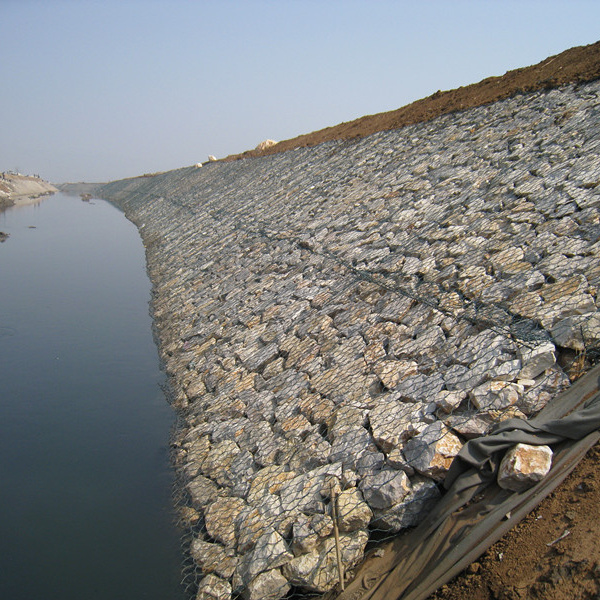Sep . 29, 2024 07:54 Back to list
Constructing Durable Gabion Walls for Effective Soil Retention and Erosion Control Solutions
The Benefits of Gabion Retaining Walls
In the world of civil engineering and landscape architecture, retaining walls play a crucial role in managing soil erosion, controlling water flow, and enhancing aesthetic appeal. Among various types of retaining walls, gabion walls have gained significant popularity due to their unique design, functionality, and environmental benefits. This article delves into the advantages of gabion retaining walls and their applications in modern construction.
Gabion walls are constructed using wire mesh cages filled with stones, rocks, or other durable materials. These structures can effectively retain soil and provide stability to sloped terrain, making them ideal for various landscape projects, from residential gardens to large-scale commercial developments. One of the most notable benefits of gabion walls is their ability to blend seamlessly with the natural environment. The stones used in the construction can be sourced locally, allowing the wall to harmonize with the surrounding landscape and promote biodiversity.
One of the primary functions of a retaining wall is to prevent soil erosion. Gabion walls are particularly effective in this regard. The gaps between the rocks in the cages allow for water drainage, reducing the pressure that builds up behind solid walls. This drainage capability minimizes the risk of hydraulic pressure that can lead to wall failure, making gabion structures not only durable but also safer in environments prone to heavy rainfall.
Gabion retaining walls are also notable for their flexibility and adaptability. They can be built in various shapes and sizes to suit the specific requirements of a project. This versatility allows designers and engineers to implement gabion walls in a wide range of settings, including riverbanks, slopes, and even urban areas where space constraints may be an issue. As they can accommodate different materials, gabion walls can easily be customized to achieve the desired aesthetic while maintaining structural integrity.
gabion retaining wall

Moreover, the construction of gabion walls is relatively straightforward, leading to reduced labor costs and time. The materials used are typically affordable and readily available, making gabion walls an economically viable option for many projects. Additionally, the wire mesh is often made from galvanized steel, which is resistant to rust and corrosion, contributing to the longevity of the structure.
Environmentally, gabion walls provide several advantages. Unlike traditional concrete retaining walls, gabion structures promote vegetation growth. The spaces between the rocks allow plant roots to penetrate, leading to a more natural and appealing landscape. This integration of vegetation can help further reduce soil erosion, as plants stabilize the soil with their roots, and contribute to improved air quality.
However, while gabion retaining walls offer numerous benefits, it's essential to consider their limitations. In regions with seismic activity, the stability of gabion walls can be a concern, as they may not perform as well as traditional walls under certain conditions. Additionally, proper design and construction techniques are vital to ensure the effectiveness of the wall. Therefore, involving a professional engineer during planning and execution is crucial.
In conclusion, gabion retaining walls represent an innovative and sustainable solution for managing soil, enhancing landscapes, and preventing erosion. Their ability to blend with the natural environment while providing structural support makes them a preferred choice in many construction projects. As urban development continues to grow, the use of gabion walls may become increasingly prevalent, offering both aesthetic and functional benefits that align with modern ecological practices. Whether used in residential gardens or larger civil engineering projects, gabion retaining walls exemplify how effective design can contribute positively to our surroundings.
-
Why PVC Coated Gabion Mattress Is the Best Solution for Long-Term Erosion Control
NewsMay.23,2025
-
Gabion Wire Mesh: The Reinforced Solution for Modern Construction and Landscape Design
NewsMay.23,2025
-
Gabion Wall: The Flexible, Seismic-Resistant Solution for Modern Landscaping and Construction
NewsMay.23,2025
-
Gabion Wall Solutions: The Durable, Decorative, and Affordable Choice for Every Landscape
NewsMay.23,2025
-
Gabion Basket: The Durable and Flexible Alternative to Traditional Retaining Walls
NewsMay.23,2025
-
Gabion Basket: The Proven Solution for Slope Stability and Flood Control
NewsMay.23,2025
-
Versatility of Chain Link Fence Gabion
NewsMay.13,2025






